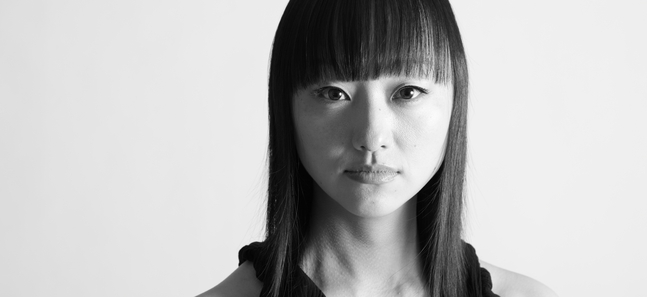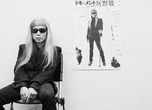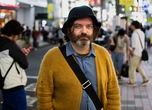Interview: Ryoko Aoki
We talk to the noh performer about breaking the mould of traditional theatre

Posted: Tue Aug 06 2013
In an art form that's usually the preserve of men born into noh families, Ryoko Aoki stands out. For starters she's a woman who took an interest in noh as a teenager, and has broken even further from tradition with her collaborations with other genres of theatre and music. This month she will present Noh x Contemporary Music – a recital incorporating traditional noh with modern music created by young composers from around the world. We chat to her about her inspirations and the challenges she's faced.
Can you tell me a little bit about noh?
Noh is a style of traditional Japanese theatre, created in the 14th century by father and son Kan’ami [Kiyotsugu] and Zeami [Motokiyo]. Nowadays, the representations of gender roles are relatively fixed, as are most aspects of texts and performance. I have trained in noh chanting and dancing for about 20 years, and am often asked whether women can perform noh. Most people understand that noh is a performance created especially for men, and that women are still underrepresented – although there are female performers, it is generally accepted that it's a masculine art form.
What challenges have you faced pursuing a career in noh?
Most performers are from noh families, where the tradition is handed down from father to son. However, I was not born into a noh family, I practised classical ballet from the age of eight, which is not unusual among Japanese girls, but I wondered why the girls of my generation practised only Western arts, such as piano and ballet. Nowadays Western culture is more common among Japanese people than Japanese traditions – many Japanese people seem to feel that Japanese traditions are limited to specialised people. One day I saw a TV programme on noh. I was impressed by it, and so when I was 14 I started practising at the Kanze school in my hometown, Oita, before going on to Tokyo National University of the Arts, specialising in traditional Japanese music and focusing on noh plays. At first I didn't realise the difficulties faced by women and people from non-noh families who wanted to get into the society, but there were six students on my course and, other than me, they were all men, with four of them coming from noh families. People would say to me, 'You're a woman. In noh society, it's difficult for women to do the same activities as men. So, what are you going to do about the future?' This was when I started to notice the challenges of my situation. I was interested in developing a new frontier, and I believed that art should develop based on earlier traditions. That's why I chose to study at the Tokyo National University of the Arts – I thought that since there were many artists there, there would be many collaborations. But in reality we were very busy with our lessons, so we didn't have much time to do activities outside our circle. Also, many noh students aren't interested in collaborations because noh performers are taught to preserve tradition above all else, and believe that working with other genres will destroy the tradition. However, at that time Kanze noh actor Nomura Shiro started teaching at the university and he was very open minded. The university tried to foster communications between different disciplines, and Nomura recommended that I take part in that kind of project, so I started collaborating with other genres.
What inspired you to start this project?
As a contemporary noh performer, I was thinking about what modern noh theatre should be like. In Europe, the theatres and opera houses always show new versions of classical operas, or new interpretations of Shakespeare plays, which is why not only the older generation, but also the younger generation, go to performances. In contrast, in the Japanese theatre scene we have several traditional performance genres, such as noh, kabuki and bunraku, and many people think the most important thing is preserving these traditions. Of course, we should be very proud that we have managed to keep these traditions alive, but, unfortunately, we don't have many opportunities to show new creations based on them. Nowadays, young people aren't as interested in traditional performances, so the audience is decreasing. We should think about that.
What can you tell me about your project Noh x Contemporary Music?
I started this project in Tokyo in 2010, with support from the Minato Prefecture Grant for Culture, by commissioning five young international composers from Germany, France, Italy, Finland, Greece, and of course, Japan, to write new pieces for noh for each year of the project. One concert focuses on one composer. In the first half, the composers talk about their own work, and in the second half, a new piece is performed. After that, we discuss the piece with the audience. This is a useful process because collaborations between noh and contemporary music haven't really been explored before, so evaluating what makes good noh in contemporary music is very difficult and there has to be room for experimentation. So far, I've premiered 15 pieces in this series, singing with Western instruments musicians (flutes, clarinets and percussions). This month's recital at Tanakawa Civic Hall on August 22 has been developed based on the previous three-years series, featuring a new piece by Japanese composer Noriko Koide.
What are some of the challenges you've faced with the project?
Noh performers sing songs, but their singing differs fundamentally from Western musical styles. In noh, performers do not need an absolute pitch. Noh has its own notation system for chanting, with upper, middle and lower pitches. However, this makes it difficult to transcribe using Western musical notation. When the performer starts singing, he or she can choose the pitch in which to sing. So, for composers who mainly create pieces using Western instruments, it is not easy to craft someting for a noh voice. It is also very challenging for me to try new pieces because noh performers usually only work with classical pieces. However, despite this, we've managed to create some great new pieces for Noh voices, and I am sure that we can develop a new art by combining noh with contemporary music.
How do you think contemporary music enhances traditional noh?
I have mainly worked with artists in other genres, but now I try to focus on collaboration with composers to make new pieces for my voice. Many directors, such as Peter Brook, Robert Wilson and Tadashi Suzuki, have produced new pieces inspired by noh theatre, but not as many composers have done the same. That said, in the 1960s in Japan several composers crafted pieces inspired by noh, for example Toru Takemitsu, Joji Yuasa, Toshi Ichiyanagi and Kazuo Fukushima. However, since this generation few new works have appeared. We have a strong tradition of music in noh, but in-depth collaborations have never been done, so I'd like to explore that.
What's been the most rewarding thing about the project?
I've been given several opportunities to perform my repertoire in Europe, but this recital will be my first in Japan, so I'm very excited about performing.
Do you have any future projects that you're working on?
I'll be making my debut at Teatro Real de Madrid in October, where I'll play the role of Malinche in German composer Wolfgang Rihm's opera 'Die Eroberung von Mexico', directed by Pierre Audi, with stage design by Alexander Polzin, alongside leading singers Nadija Michael in the role of Montezuma and Georg Nigl in the role of Cortez. The libretto of this opera is based on Antonin Artaud. This opera depicts the encounter of the ruler of Mexico, Montezuma and a Spanish Conquistador, Cortez. My role, Malinche is translator between them and the mistress of Cortez. Artaud was inspired by non-Western theatre including Japanese Noh. That’s why I was played as this role. I am very thrilled to join this production!
Ryoko Aoki will perform her latest instalment of Noh x Contemporary Music at Takanawa Civic Hall on August 22
Tweets
- About Us |
- Work for Time Out |
- Send us info |
- Advertising |
- Mobile edition |
- Terms & Conditions |
- Privacy policy |
- Contact Us
Copyright © 2014 Time Out Tokyo














Add your comment